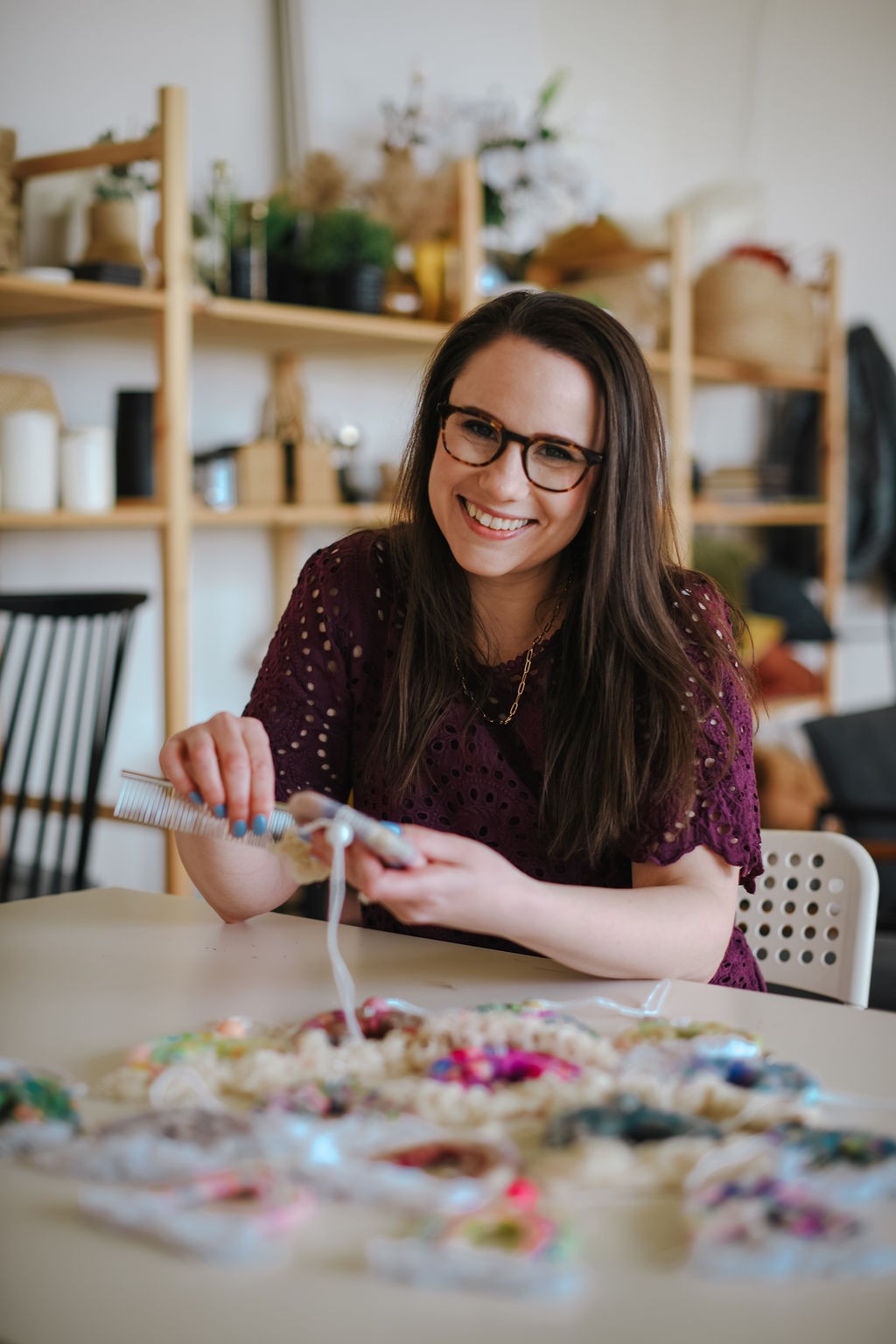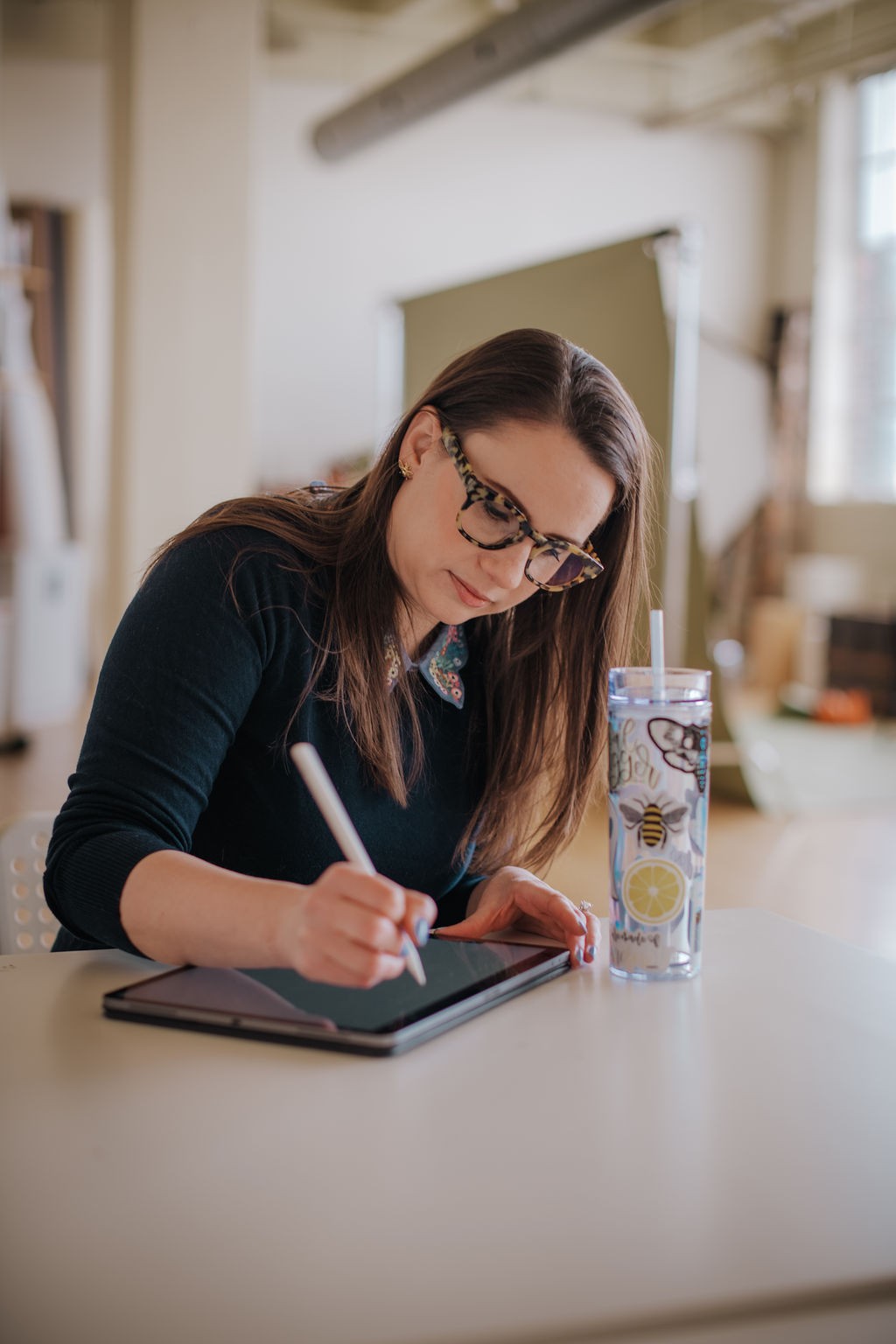We recently connected with Rachel Napoli and have shared our conversation below.
Hi Rachel, thanks for joining us today. One of the things we most admire about small businesses is their ability to diverge from the corporate/industry standard. Is there something that you or your brand do that differs from the industry standard? We’d love to hear about it as well as any stories you might have that illustrate how or why this difference matters.
I don’t maintain an email list. I know a critical part of a small product-based business is building that core customer base, and the industry-standard way to do that is through an email list. To put it bluntly, I don’t have time. Said a better way, it’s something that I have chosen not to prioritize, in favor of focusing on other parts of running my business. I work full-time, in addition to running my maker business, and this business started from hobbies that I enjoy. Thus, I really need to be mindful of how I spend my time, and I want to make sure that I enjoy running my maker business – so I prioritize activities that aren’t necessarily the most enjoyable, that I absolutely must do (like filing state taxes), and the parts of my business that I love (like creating new products and fulfilling orders)
Creating and nurturing an email list falls into neither of those categories: it’s not an absolute must-have for where I am currently, and it’s not something I would enjoy.
This could certainly change as my business grows and evolves, but currently, I don’t abide by that standard best-practice for my industry.



Awesome – so before we get into the rest of our questions, can you briefly introduce yourself to our readers.
I’m Rachel, and my business is Made by Rachel. I’m a digital artist, modern calligrapher, and fiber artist, and my business seeks to add color to the everyday. I sell waterproof vinyl stickers of my original hand-lettering and illustrations and handmade macrame rainbow home decor.
I have always had a creative side and enjoyed arts and crafts my whole life, so this business started as a hobby and creative outlet. I work in Tech full-time, and while that job calls for a certain type of creativity, I found myself wanting to create things.
I started with papercraft around 2014, using scrapbooking paper to make greeting cards. I realized that my favorite part of cardmaking was hand-lettering text in fun styles and leaned into that. I took a modern calligraphy workshop at a local stationery store and was instantly sold! I went all-in on modern calligraphy, trying out different mediums and discovering my style, and set a goal to open an Etsy shop for watercolor calligraphy greeting cards, which I did in 2018. In short, my shop did not do well, and my interest kind of tapered off in favor of dabbling in jewelry-making and a few other short-lived crafts.
Fast-forward to 2020 when, like many, I got laid off. Finding myself with a lot of time on my hands, I decided to really double down on growing my business and creating a successful Etsy shop. I focused my efforts on combining my love of modern calligraphy with a bourgeoning interest in digital art – I took courses on using the Procreate app, learned how to optimize my Etsy shop, and researched the ins and outs of sticker production. I’ve always loved stickers – growing up, I treasured my collection of Lisa Frank sticker sheets – and the idea of putting my hand-lettering and artwork on a sticker, that could be used to personalize something that was otherwise plain, really appealed to me. By the time I got a new full-time job that summer, I had established a solid foundation for my shop to where I could balance a full-time job and running it on evenings and weekends.
Today, I have over 75 original sticker designs, and my shop traffic and orders are on track to consistently double year-over-year. I have also expanded to selling wholesale and at local in-person markets.
Rainbows are a more recent addition to my product assortment; while stickers are my bread and butter, I sought something that would be 100% analog. On Pinterest and Instagram, I would often come across gorgeous, bright, vibrant yarns and fibers that I just had to have … but I knew I didn’t want to pick up knitting or crochet. I’d also see pretty rainbow wall decor, keychains, and car charms made of macrame cord and realized I could do something similar with these amazing yarns … and the rest is history! While digital art makes it extremely convenient to convert artwork into products, making something completely by hand is another way I fill my creative cup.
I’m extremely proud of the originality and uniqueness of my products.
All of my stickers are my original designs – everything is hand-drawn and hand-lettered by me. No fonts or clip art here!
To make rainbows, I source yarns from small hand-dyeing shops, and I wrap and sew each rainbow together by hand. While macrame rainbows are a popular piece of home decor, I have not seen my particular combination of technique and materials used elsewhere.


Do you sell on your site, or do you use a platform like Amazon, Etsy, Cratejoy, etc?
I primarily use Etsy to sell my products! Etsy makes it extremely easy for makers to get started selling handmade products online. The number one pro about Etsy, in my opinion, is that Etsy brings traffic to you. You don’t need to worry about that first step in the conversion funnel, and you can focus on optimizing your shop to get people to buy.
That brings me to a con of Etsy – there is a learning curve to optimizing Etsy’s SEO algorithm. There are a lot of resources available to learn (including Etsy’s own Seller Handbook), but it does take time and effort to master.
Another con of Etsy is that in the last few years, there has been an influx of products that aren’t handmade. From what I understand, Etsy does try to mitigate this, but it does make it harder for true handmade products to stand out in a broader pool of sellers.
I am working on opening up my own e-commerce platform, but for now, Etsy relieves me from needing to bring in all my own traffic, which is a huge benefit to where I currently am with my business.


Okay – so how did you figure out the manufacturing part? Did you have prior experience?
I outsource sticker manufacturing, which allows me to focus on design. I don’t need to mess with a printer, testing out materials, or a cutting machine, and I am confident that my end product will be high-quality. I use several vendors, which took a lot of research and trial and error.
I started by googling sticker manufacturers and ordering sample packs from any that offered them – many are free, or $1 or 2. A few manufacturers also do sample runs of your own design for around $10. While I checked out sample packs, I also compared pricing for different quantities and finishes.
That was a good baseline to start with, and over time, I have honed in on which vendors I prefer (and which to avoid!) depending on the quantity and finish I need. For example, I have a preferred vendor for clear vinyl stickers, and another for holographic.
Contact Info:
- Website: https://madebyrachel1.etsy.com
- Instagram: @_made_by_rachel_
- Other: Faire wholesale: https://madebyrachel.faire.com
Image Credits
Shiny Penny Studios Darling Rose Photography


